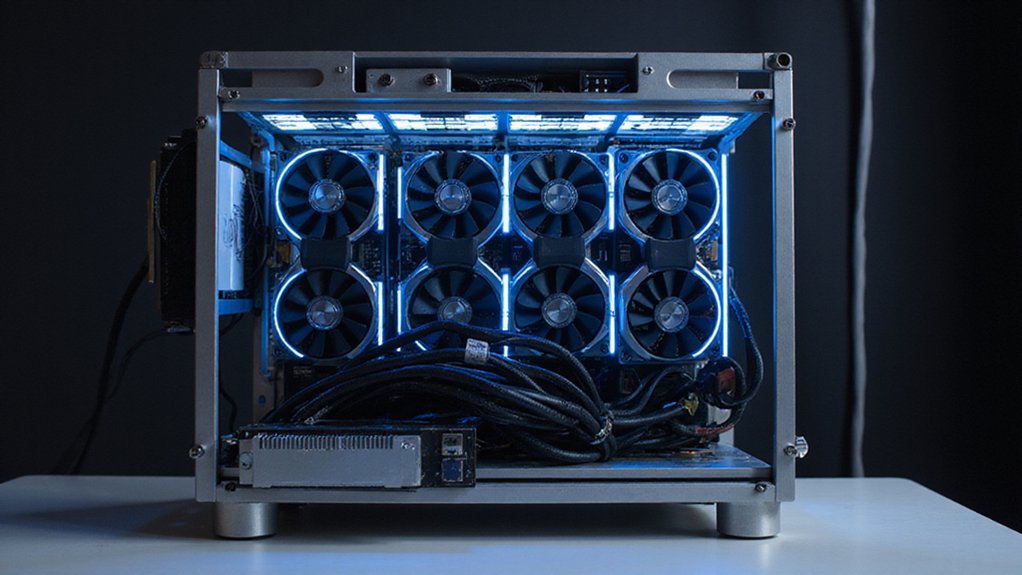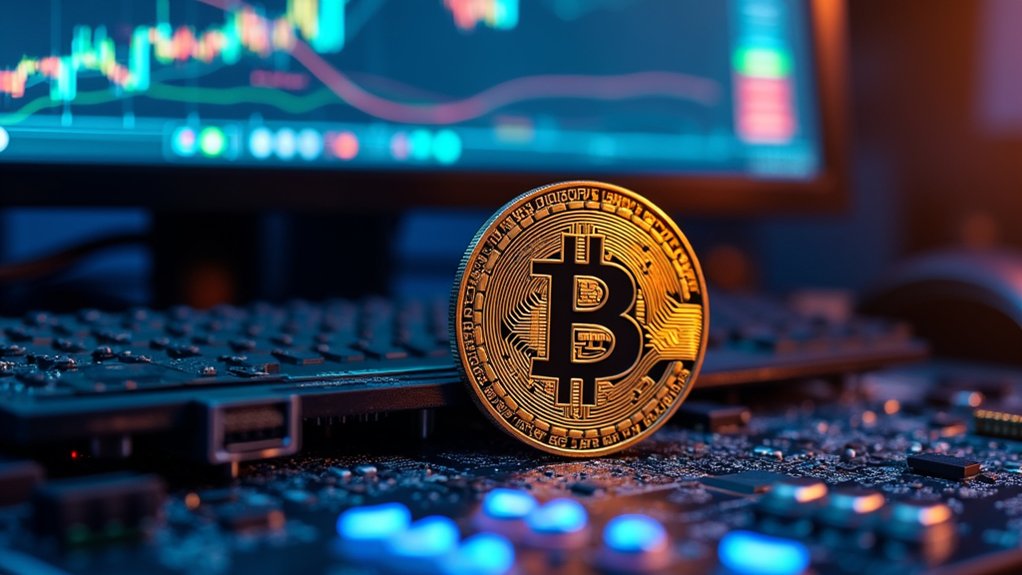Getting crypto airdrops requires minimal preparation but potentially yields outsized returns. First, establish secure non-custodial wallets like MetaMask (Ethereum) or Phantom (Solana), keeping separate addresses for airdrops versus primary holdings. Then hunt for opportunities through platforms like airdrops.io, crypto newsletters, and community forums. Most distributions demand either existing token holdings or completing simple tasks—social promotions, forum participation, or ecosystem engagement. Keep network-native tokens handy for transaction fees; the airdrop rabbit hole goes surprisingly deep.

Why would cryptocurrency projects willingly distribute tokens worth potential millions for seemingly negligible effort?
Projects distribute tokens worth millions because distributed ownership creates both regulatory compliance and powerful network effects.
The answer lies in an elegant alignment of incentives: nascent blockchain protocols require distributed ownership and engaged users to achieve both regulatory compliance and network effects.
Airdrops—the practice of sending free tokens directly to wallet addresses—accomplish this dual objective while generating marketing momentum that traditional campaigns cannot replicate.
Crypto airdrops come in several variants, each with distinct qualification parameters.
Standard airdrops require minimal engagement; holder airdrops reward existing cryptocurrency owners; while task-based distributions demand specific actions ranging from social media promotion to testnet participation.
The savvy recipient recognizes that projects with substantive technical requirements typically offer more valuable tokens than those demanding mere promotional activities.
Bounty airdrops often require users to perform specific tasks like participating in discussions on cryptocurrency forums to increase project awareness.
Exclusive airdrops specifically target early adopters who have demonstrated commitment to particular blockchain ecosystems.
Preparation begins with establishing a secure non-custodial wallet infrastructure—MetaMask for Ethereum-based tokens or Phantom for Solana ecosystems being predominant choices.
The prudent participant maintains separate wallets for airdrops versus primary holdings, therefore compartmentalizing potential security risks.
Adequate reserves of network-native tokens (ETH, SOL) must be maintained for transaction fees when claiming rewards.
After receiving tokens from airdrops, many users convert them to Bitcoin through crypto exchanges like Coinbase or Binance to consolidate their holdings.
Finding legitimate opportunities requires algorithmic vigilance.
Dedicated platforms like airdrops.io aggregate verified distributions, while crypto-native newsletters and community forums provide advance notice of potential retroactive rewards.
The asymmetric returns justify the time investment in research—a single successful airdrop can yield returns equivalent to months of conventional investment appreciation.
Post-qualification, recipients face strategic decisions regarding token disposition.
Immediate liquidation captures definite value but sacrifices potential appreciation; conversely, retention exposes one to underlying project risk.
Sophisticated participants often bifurcate their approach, selling a percentage to recover opportunity costs while maintaining exposure to promising protocols.
The regulatory environment surrounding airdrops remains ambiguous in most jurisdictions, with tokens typically classified as income upon receipt rather than at liquidation.
Recipients must maintain meticulous records of acquisition dates and fair market values—a tedious but necessary administrative burden in an industry where disruptive innovation consistently outpaces regulatory frameworks.
Frequently Asked Questions
Are Airdrops Taxable Events in Most Countries?
Airdrops constitute taxable events in most jurisdictions worldwide, with countries like the United States, United Kingdom, Australia, and South Africa typically treating them as immediate income upon receipt.
The fair market value at acquisition establishes the cost basis for subsequent capital gains calculations.
Notable exceptions exist—Germany and Portugal offer more lenient treatment—but recipients should assume tax liability is the norm rather than exception.
The burden of compliance (and record-keeping) falls squarely on the taxpayer, regardless of how ephemeral that windfall might prove.
How Do I Avoid Airdrop Scams and Fake Tokens?
To avoid airdrop scams, users should adopt a multi-layered defense: verify projects through official channels, eschew offerings requiring upfront payments (an unmistakable red flag), and maintain dedicated wallets with minimal funds for airdrop participation.
The cryptocurrency landscape, rife with opportunistic actors, demands vigilance regarding unsolicited messages and suspicious social media profiles.
Implementing robust security measures—2FA authentication, regular wallet reviews, and steadfast protection of private keys—transforms airdrop participation from a minefield into a calculated venture.
What Happens if I Miss an Airdrop’s Snapshot Date?
Missing an airdrop’s snapshot means forfeiting the opportunity to receive tokens that, ironically, could’ve been acquired for free.
Users who aren’t holding the qualifying assets in eligible wallets at the precise moment become spectators rather than participants.
There’s no recourse—screenshots proving previous ownership are worthless when blockchain timestamping is concerned.
While occasionally projects run multiple snapshots or create alternative qualification paths, prudent crypto enthusiasts should mark their calendars and position assets accordingly to avoid this particular form of financial FOMO.
Can I Receive Airdrops on Centralized Exchanges?
Yes, centralized exchanges do facilitate airdrops, though with significant caveats.
Users can receive tokens automatically without manual claiming—a convenience that comes at the cost of typically smaller allocations.
Exchanges impose their own eligibility criteria (minimum balances, KYC requirements) and support only selected projects.
While this approach offers simplified claiming and reduced security risks, users sacrifice distribution size and may face withdrawal restrictions or delayed distributions compared to self-custody alternatives.
How Long Should I Hold Airdropped Tokens?
Holding airdropped tokens demands nuanced strategy rather than one-size-fits-all timeframes.
Ideal durations vary based on project fundamentals (team credibility, development pace), vesting conditions, and market cycles.
The prudent holder navigates between premature liquidation—potentially forfeiting governance rights and subsequent distribution phases—and diamond-handing depreciated assets.
Research-driven decisions, considering both tax implications and token utility within the ecosystem, invariably outperform arbitrary holding periods (which, remarkably, many newcomers cling to with religious fervor).









